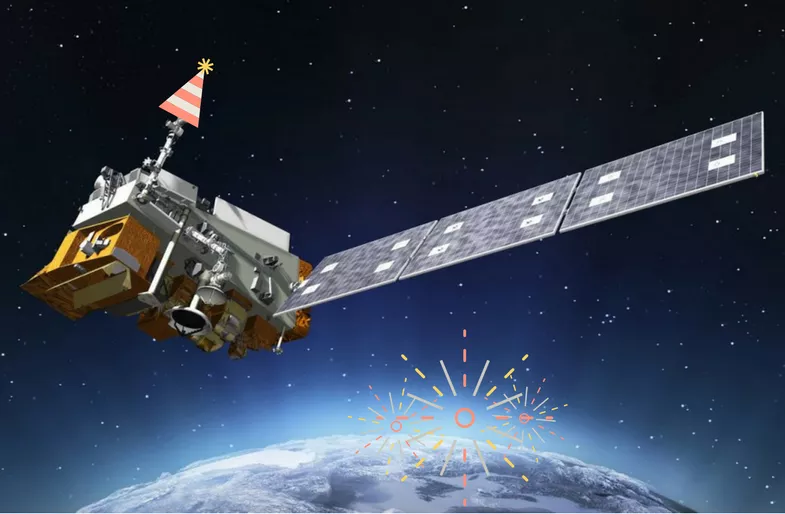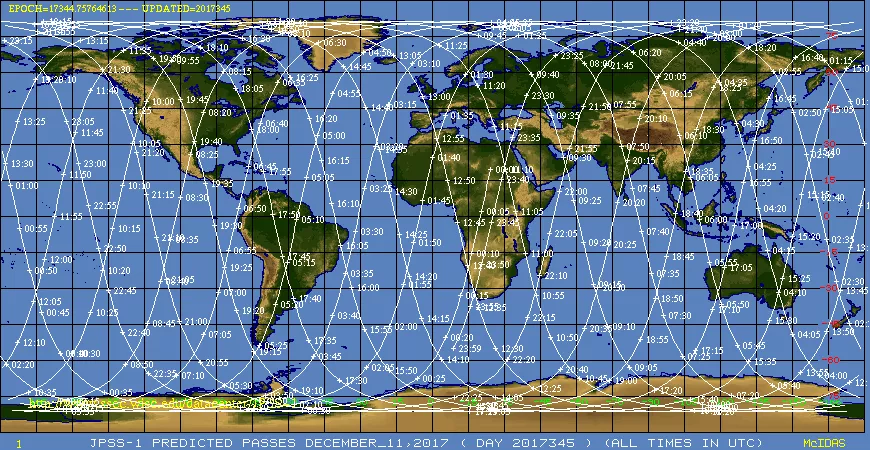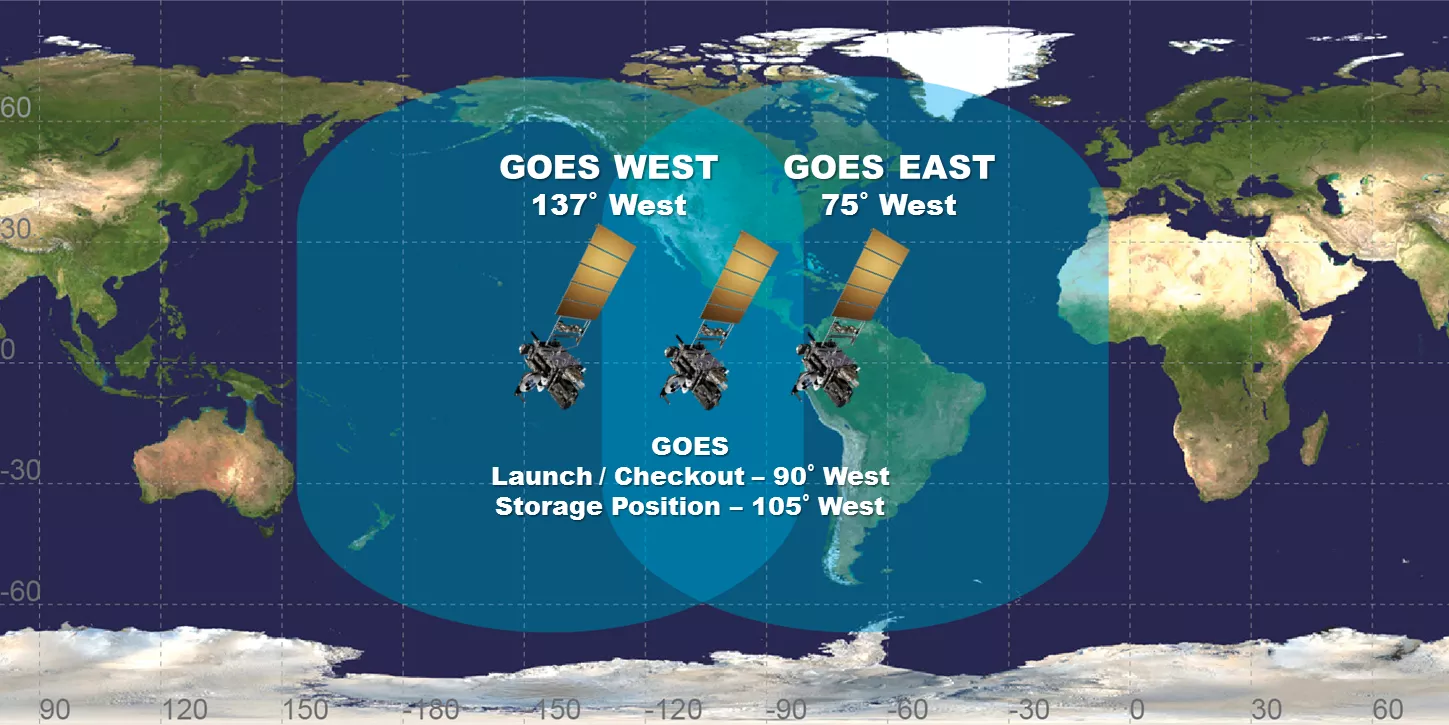
Every year at midnight on December 31st, the mathematical and mysterious converge as we witness a new year begin! It’s a pretty exciting event here on Earth, and thinking about time and space has us wondering: how many New Year's Eve celebrations will our satellites in the sky capture this year? We know that NOAA-20, our most advanced polar-orbiting weather satellite, makes 14 rotations around the globe each day, scanning every location on Earth at least twice in 24 hours. We also know our geostationary satellite NOAA GOES-16, now in the operational GOES East location, maintains watch over the Western Hemisphere. So, let’s start the calculations!
Will NOAA-20 See the Ball Drop in Times Square on December 31st 2017?
Sadly not! NOAA-20 won’t be celebrating midnight with New York because it generally passes over the East Coast of the United States at around 1:30 am most nights.
NOAA-20 (along with all our operational polar-orbiting satellites) follows a sun synchronous orbit, so it will pass over a point on the Earth at the same solar time (sun at the same place) every day. NOAA-20 generally makes two passes over each location on Earth each day (24 hour period), at approximately ~1:30am local time and ~1:30pm local time, capturing images with varying amounts of light. There are however some very lucky places on Earth that will see NOAA-20 pass them four times in a 24 hour period, if they catch the very beginning and very end of the orbital path. This helps forecasters and climate scientists gain a better understanding of global weather patterns, surface temperatures and reflected light. As part of the Initial Joint Polar System (IJPS) and international agreements, NOAA has agreed to occupy the early-afternoon sun-synchronous orbit in coordination with the multi-orbit constellation of polar orbiting satellites. #TheMoreYouNOAA !
So where will NOAA-20 see clocks switch from 11:59 pm to Midnight? Well, it will see at least one New Year’s Eve - its own! Satellites observe UTC - Coordinated Universal Time - which is technically a time standard, and is used in some countries, such as Iceland and the United Kingdom during the winter.
Weather observations around the world (including surface, radar, and other observations) are always taken with respect to this standard time. NOAA-20, along with all the satellites in NOAA’s fleet will observe time switch from 23:59 to 00:00 UTC on January 1st!
Where will NOAA-20 be at 00:00 UTC on January 1st?
Predicting exact satellite orbit times is a highly technical process. However, the United States Air Force tracks all detectable objects orbiting the earth. By doing this, they are able to create a pair of ‘two line’ elements, which defines what two locations an object will be between at a given time in the near-future. The US Air Force provides the information of certain international satellites publicly here. With this information we are able to predict that a satellite will be at a certain time, allowing for satellite operators, such as NASA and NOAA, enough time to perform maneuvers in order to avoid space debris or other satellites. There are several websites that allow you to track the approximate location for various satellites. For example, you can track NOAA-20 (JPSS-1) right here: http://www.n2yo.com/?s=43013
Based on the latest information at the time this article is published, NOAA-20 is predicted to be just off the coast of Africa at 00:00 UTC on January 1, 2018.

What about GOES-16? Will it Toast New Year’s Eve with America?
Unlike it’s fleet-mate, the global party hopping NOAA-20, NOAA GOES-16 (currently the operational GOES East satellite ) and GOES West (GOES-15) are geostationary satellites, which means they rotate with the Earth and keep a fixed watch over the Western Hemisphere. Thanks to their large swath sizes, the GOES satellites will still be able to ring in New Year’s Eve with a total of 17 time zones. That’s a lot of champagne!
We wish everyone a very happy New Year, from NOAA’s Satellite and Information Services!
